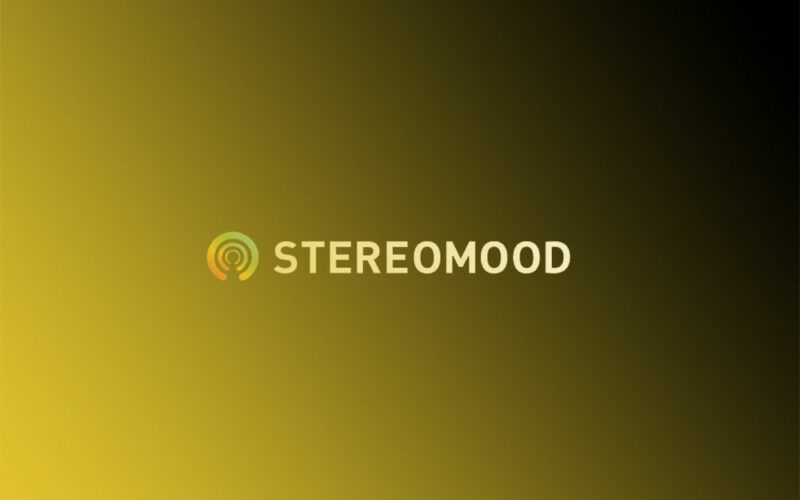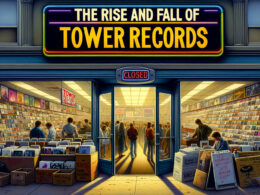Once upon a rhythm, the digital soundscape was aglow with a unique proposition: Stereomood. Imagine streaming soundtracks exclusively tailored to capture every nuance of your emotional spectrum.
The crescendo of curiosity builds: what happened to Stereomood? It sang lullabies to the restless, soundtracked the ecstasy of lovers, and fueled the sprints of the ambitious. In a world awash with music streaming services and playlists curated on-demand, Stereomood’s absence strikes a silent note.
With the turn of each page—or swipe, in our digital era—this piece aims to excavate the layered symphony of events that led to Stereomood’s quiet disappearance.
Drift through the nuances of music discovery, venture behind the melodies of mood-based music recommendations, and explore the intricate dance of music licensing that choreographs the fate of streaming platforms.
By the final cadence, you’ll unwrap the enigma of a service once at the vanguard of emotional music recommendation, understanding the technological crescendos and diminuendos that echo through the evolution of digital music consumption.
The Vision Behind Stereomood
Founding team and their background
Daniele Novaga, Eleonora Viviani, Giovanni Ferron, Maurizio Pratici
These weren’t your average Joes. Daniele, Eleonora, Giovanni, and Maurizio were like the Avengers of the music tech startup world.
A squad with a dream to shake up how we all vibed to music. They weren’t just building a platform; they were engineering emotions, tuning into the heartbeat of their audience.
The role of Claudio Gallo and Bad Panda Records
Enter Claudio Gallo, the guy with his finger on the pulse of the indie scene. With Bad Panda Records in his arsenal, Claudio was like a maestro, orchestrating a symphony of independent artists.
He bridged the gap, connecting the dots between Stereomood’s vision and the raw, untapped talent of the music underground.
The early music tech landscape
Pre-Spotify era

Backtrack to a time when music streaming was still finding its feet. It was the wild west, a frontier land where pioneers like Stereomood were charting unknown territories.
The concept of mood-based music curation? Revolutionary. The digital music landscape was ripe for disruption, and Stereomood was gearing up to be a game-changer.
The competition with Last FM and Pandora
But this wasn’t a solo journey. Giants roamed the land – Last FM, Pandora. These were the big fish, the established sheriffs in town.
Stereomood wasn’t just stepping into the ring; they were redefining it, bringing a fresh perspective to the music recommendation algorithm showdown.
Business Model and Growth
Funding and financial challenges
The single round of funding
Alright, let’s dive into the dough, the moola. Stereomood had this one shot, a single round of funding.
Think of it as their one arrow in the quiver. They had to make it count, had to hit the bullseye to keep the lights on and the music playing.
The struggle to profitability
It’s like being in a band, you know? You’ve got the talent, the fans, but at the end of the day, you’ve gotta eat.
Stereomood was jamming, but the cash register wasn’t ringing loud enough.
They were juggling the streaming service competition, trying to carve out their piece of the pie, but the road to profitability was like an uphill climb in flip-flops.
Expansion and user engagement
Growth in the number of playlists and songs
So, they started amping up. More tunes, more vibes. The number of playlists and songs started to balloon like they were on a growth hormone.
People were digging it, finding their groove for every mood, every whim.
Community involvement and the tagging dilemma
Now, this is where it gets cool. The community started chipping in, tagging songs like they were it. It was a collective effort, a shared vibe.
But here’s the twist – too many cooks in the kitchen, you know? The tagging dilemma reared its head. Keeping it consistent was like herding cats.
Technical Challenges and Innovations
Development of mood categorization technology
Transition from manual to community-based tagging
Started old-school, with manual tagging. But who’s got the time? They switched gears, went all in with community-based tagging.
It was like crowdsourcing emotions, a digital mood ring powered by the people.
Integration with image services for album covers
Then, they jazzed it up with some eye candy. Album covers started popping up, thanks to some slick integration with image services.
It wasn’t just about the beats anymore; it was a visual journey, too.
The algorithmic breakthrough
Development of a mood-defining algorithm
Here comes the brainiac stuff. They cooked up this mood-defining algorithm, like a secret sauce for your ears.
This wasn’t just shuffling songs; this was high-level matchmaking, pairing you with the perfect track for your feels.
Accuracy and impact on the music database
This algorithm was a sharpshooter, man. It was nailing moods with an accuracy that made Cupid look like a rookie.
And the impact? Massive. The music database turned into a treasure trove of emotions, each song a gem reflecting a facet of the human experience.
Design and Interaction
Enhancing user experience
Interface improvements for mood discovery
So, picture this: You land on a website and bam, it just gets you. That was the goal.
Stereomood leveled up their interface, making mood discovery as easy as swiping right on your fave dating app. It was slick, intuitive, and oh-so-smooth.
Personalization features
But it gets better. They rolled out these personalization features that were like having your own DJ who knew all your dirty little music secrets. It wasn’t just playing tunes; it was like whispering sweet nothings to your soul.
Marketing and collaborations
Curated playlists with independent artists
Here’s where it gets indie-cool. Curated playlists spotlighting independent artists were like hidden gems in a sea of mainstream. It wasn’t just about the beats; it was about the stories, the heart, and the hustle behind each track.
Mood’o’Clock and other marketing campaigns
And then, boom, Mood’o’Clock drops. This campaign was like a wake-up call to all the mood music lovers. Other marketing stunts followed, each a love letter to the audiophiles and the vibe seekers.
The Acquisition and Its Aftermath
The acquisition and its impact
The shift in company direction post-acquisition
Change is the only constant, right? Post-acquisition, Stereomood’s compass spun in a new direction.
Some dug it, others not so much. It was like watching your favorite indie band go mainstream. The vibe shifted, and with it, so did the community.
The decline in community engagement
Let’s face it, change can be a party pooper. Community engagement started dipping.
It was like throwing a rave and forgetting to invite the ravers. The once buzzing community started feeling more like a ghost town.
The competitive landscape
The entry of Spotify into the market
Enter the Goliath, Spotify. These guys were like the cool new kid on the block, and everyone wanted a piece.
The music streaming playground got a whole lot more crowded.
The changing dynamics with Last FM
And then there’s Last FM, the old guard. Dynamics shifted, alliances formed and reformed. It was a dance, a tango of tech and tunes.
FAQ On What Happened To Stereomood
Why Did Stereomood Shut Down?
Ephemeral, like autumn leaves, streaming services sometimes fade. Stereomood’s curtain call was orchestrated by an ensemble of factors, not least the competitive storm in music streaming services.
Licensing complexities and economic sustainability often compose the swan song for such innovative platforms.
Where Has Stereomood’s Music Library Gone?
Songs once living in Stereomood’s chest now disembarked. Their digital echoes may linger across the web in alternative services.
However, the unique mood-based playlists that defined Stereomood’s identity have since scattered, likely absorbed into larger streaming platforms and online playlists.
Can I Access My Old Stereomood Playlists?
A time capsule for moods, now sealed. Unfortunately, your personalized melodic diaries, delicately woven from the rich tapestry of emotional music recommendation, have been archived in the vaults of the internet, inaccessible with the closure of Stereomood.
Are There Any Alternatives to Stereomood?
Innovation never sleeps; alternatives abound. Journeys through music discovery continue with platforms such as Spotify and Pandora. They’ve adopted mood-matching features, paying homage to the path Stereomood paved.
Was Stereomood Free to Use?
Free as the airwaves it rode on. Yes, Stereomood offered a repertoire of sentiment-driven content without charge. A gracious host that, much like public radio, provided mood-based music without the barrier of a subscription, relying instead on alternative financial models.
Did Stereomood Have Its Own Music?
Curators, not creators. Stereomood wasn’t a producer but an architect of ambiance, constructing an emotional sanctuary through user-generated playlists and music recommendation systems. It stitched together existing melodies into a seamless tapestry reflecting listeners’ feelings.
Why Was Stereomood Popular?
It understood the heart’s rhythm. At its zenith, Stereomood was a beacon for those seeking resonance between their inner echo and the music they consumed.
Such emotional tagging in music cultivated a loyal following that craved more than just sound— they sought symphony with their soul.
Is There a Way to Recreate Stereomood’s Experience?
Creative spirits unite in the challenge. While one can’t replicate the exact alchemy of Stereomood, savvy web designers and music app developers persist in perfecting algorithms that mirror mood analytics. They strive to recreate that same personal, emotional connection through technology.
What Made Stereomood Different from Other Music Services?
Depth, in a sea of breadth. Unlike ubiquitous streaming services, Stereomood specialized in musical moods rather than genres or artists.
Its uniqueness lay in the experiential, the emotional music recommendation, rather than categorical, approach to musical enjoyment.
How Did Stereomood Influence the Music Streaming Industry?
Silent revolutions speak volumes. Through its sentiment analysis for songs, Stereomood contributed a novel layer to the user experience in music apps, emphasizing the importance of user interface and machine learning in interpreting listeners’ emotions, influencing subsequent music recommendation systems in its wake.
Conclusion
As the final notes reverberate in the theater of our inquiry, the mystery of what happened to Stereomood finds solace in resolution. The crescendo has peaked, the dynamic shift from a pioneering mood-based music platform to a hushed memory underscores the relentless tempo of the digital music scene.
- The industry’s ballet—a blend of art and commerce—dictated Stereomood’s finale.
- Alternatives have risen, adopting the baton with advanced music recommendation systems.
- Tech startups, like budding artists, paint the same canvas with broader strokes of innovation.
Let’s depart from this exploration not with grief for silence but with admiration for the symphony that once was. Let us acknowledge the emotional resonance that Stereomood crafted, an ode to the user experience in music apps. Even as the curtain falls here, in the grand theater of digital evolution, the essence of Stereomood—its spirit—whispers in the features of successors, resonating in the online playlists that score our lives.
- Professional Video Editing with Apps Like Kinemaster - April 29, 2024
- Benefits of Working with a Professional Web Development Company For Your Website - April 29, 2024
- What’s Odoo ERP And How To Integrate It - April 29, 2024









